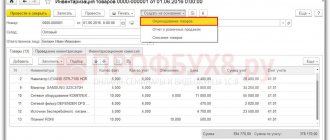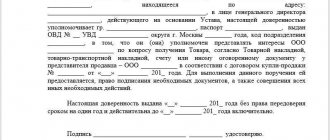Let's find out the meaning of the term. This is an event in any organization, in wholesale and retail trade, to search for discrepancies between the fixed working capital recorded in the accounting register and their actual availability. Discrepancies often cause difficulties for the chief economist, because he will have to cover the shortfall in assets from employees in equal shares. And the excess can be used in the manner prescribed in the company’s charter. The incident is recorded in the ledger in the reporting period when the inspection took place. Let's figure out together what it is to capitalize surpluses during inventory, posting, why they appear and how to properly capitalize them.
Audit nuances and purpose
A comparison of information about the material base put on the balance sheet and reflected in the original document and their condition on the day when the reconciliation occurred is mandatory. The timing and procedure of the operation is determined by the manager, except in cases where this is prescribed by the Law of the Russian Federation “On Accounting” No. 402 and Order of the Ministry of Finance No. 34-n of 1998. If there are discrepancies, then measures are prescribed to eliminate the difference that can be taken according to a pre-drawn up and approved plan.
The fact of excess is noted in the accounting department, warehouse papers, where the discrepancy was revealed.
For what reasons do they appear?
Inspection helps to detect discrepancies between the recorded money and its actual availability today. They can be in the form of money, valuables, raw materials for production, movable and immovable property. The inventory commission, not interested in financial turnover, draws up a statement and submits it to the director for consideration. And he, in turn, sets the accounting department the task of ensuring that the department correctly capitalizes and records the excess in the accounting book. An eyeliner is needed when taking inventory of identified surplus fixed assets and materials.
Main reasons:
- If the reconciliation was carried out inaccurately.
- Large production volumes can lead to errors. When distributing products in a warehouse to customers, there is a high probability of unaccounted deliveries.
- An insufficient amount of working finance is introduced.
- Errors in warehouses when taking into account the issue of materials and products. That is, they issued a smaller batch than expected.
- During the release of goods, some models were accidentally replaced by others.
Purpose and nuances of inventory
Inventory is represented by reconciling existing values with the data contained in the company’s primary documentation. The main goal of this process is to identify discrepancies between actual values and information from documents, and if they are indeed detected, then various measures are taken to eliminate this difference.
Preparation and implementation of inventory is carried out only according to a special plan drawn up in advance. It is approved by order of the head of the company.
If, as a result of the inventory, surpluses are identified, then this should be indicated in the accounting papers, as well as in the documents of warehouse premises, where fixed assets or materials that have not been capitalized are identified.
Ready-made solutions for all areas
Stores
Mobility, accuracy and speed of counting goods on the sales floor and in the warehouse will allow you not to lose days of sales during inventory and when receiving goods.
To learn more
Warehouses
Speed up your warehouse employees' work with mobile automation. Eliminate errors in receiving, shipping, inventory and movement of goods forever.
To learn more
Marking
Mandatory labeling of goods is an opportunity for each organization to 100% exclude the acceptance of counterfeit goods into its warehouse and track the supply chain from the manufacturer.
To learn more
E-commerce
Speed, accuracy of acceptance and shipment of goods in the warehouse is the cornerstone in the E-commerce business. Start using modern, more efficient mobile tools.
To learn more
Institutions
Increase the accuracy of accounting for the organization’s property, the level of control over the safety and movement of each item. Mobile accounting will reduce the likelihood of theft and natural losses.
To learn more
Production
Increase the efficiency of your manufacturing enterprise by introducing mobile automation for inventory accounting.
To learn more
RFID
The first ready-made solution in Russia for tracking goods using RFID tags at each stage of the supply chain.
To learn more
EGAIS
Eliminate errors in comparing and reading excise duty stamps for alcoholic beverages using mobile accounting tools.
To learn more
Certification for partners
Obtaining certified Cleverence partner status will allow your company to reach a new level of problem solving at your clients’ enterprises.
To learn more
Inventory
Use modern mobile tools to carry out product inventory. Increase the speed and accuracy of your business process.
To learn more
Mobile automation
Use modern mobile tools to account for goods and fixed assets in your enterprise. Completely abandon accounting “on paper”.
Learn more Show all automation solutions
Verification steps
Everything must be carried out according to the plan drawn up by the leader. Moreover, the stages are observed in the following order:
- Preparation period. An order from the director is issued, which specifies the deadline for carrying out what is considered. A special commission of several people is created, where a chief is appointed. Those persons who will be responsible if inconsistencies are found during the inspection are determined.
- It all starts with creating an inventory of existing production property with a description of its appearance today.
- A comparison sheet is created, which reflects the information obtained during the inspection, as well as the information captured in the original documents.
- In case of discrepancy, a report is drawn up where everything will be indicated.
- Based on the data received, a certificate is issued. In addition, changes are made to the balance sheet, where missing money or other valuables are written off. And capitalized surpluses identified during inventory in a budgetary institution, VAT and profit are reflected by the accountant’s posting.
The inventory company must report at each stage to the head of the company and the chief economist.
The company applies the simplified tax system with the object of taxation “income reduced by the amount of expenses.” During the inventory, she identified surplus goods, which she later sold. Can this organization take into account the cost of identified surpluses when selling them?
Value of identified surplus – taxable income
Providing clarification on this issue, the Russian Ministry of Finance noted in a published letter that the cost of surplus goods identified as a result of inventory is included in income
taken into account when determining the tax base paid in connection with the application of the simplified tax system.
This allows for paragraph 1 of Article 346.15 of the Tax Code of the Russian Federation (hereinafter referred to as the Tax Code of the Russian Federation). According to it, taxpayers of the simplified tax system take into account income from sales when determining the object of taxation. They are determined in accordance with Article 249 of the Tax Code of the Russian Federation. Payers also take into account non-operating income. They are reflected under Article 250 of the Tax Code of the Russian Federation. Paragraph 20 of this article of the code states that non-operating income is recognized as income in the form of the value of surplus inventories and other property that are identified as a result of the inventory.
Surplus valuation
The value of identified surplus property as assets received free of charge is subject to accounting at market value
. According to paragraph 8 of Article 250 of the Tax Code of the Russian Federation, when receiving property (work, services) free of charge, income is assessed based on market prices determined taking into account the provisions of Article 105.3 of the Tax Code.
This follows from letters of the Ministry of Finance of Russia dated February 11, 2011 No. 03-03-06/1/88, dated May 20, 2010 No. 03-03-06/1/338, as well as court decisions, for example:
- FAS of the Ural District dated January 18, 2011 No. F09-11222/10-S3 in case No. A60-13303/2010-S8 and dated August 13, 2009 No. F09-5794/09-S3,
- FAS Moscow District dated March 11, 2009 No. KA-A40/1255-09;
- Federal Antimonopoly Service of the West Siberian District dated November 30, 2006 No. F04-2872/2006.
It should be borne in mind that if the value of the property identified during the inventory is significant, you may lose the right to use the simplified tax system.
Reference
: a taxpayer loses the right to use the simplified tax system when his income at the end of the reporting (tax) period exceeded
60 million rubles
(clause 4 of article 346.13 of the Tax Code of the Russian Federation).
Accounting for revenue from the sale of surplus
When selling goods, including their surpluses, which are identified as a result of inventory, revenue is determined based on all receipts associated with payments for goods sold
(works, services) or property rights. The basis is paragraph 1 of Article 249 of the Tax Code of the Russian Federation.
Date of receipt of income
recognized: the day
money is received
in bank accounts and (or) at the cash desk;
the day of receipt of other property
and property rights;
the day of repayment of debt
(payment) to the taxpayer
in another way
(clause 1 of Article 346.17 of the Tax Code of the Russian Federation).
Accounting for expenses of the cost of realized surplus
Taxpayers of the simplified tax system who have chosen income reduced by the amount of expenses as an object of taxation, when determining the object of taxation, reduce the income received by:
- expenses for paying the cost of goods purchased for further sale. They must be reduced by the amount of expenses specified in subparagraph 8 of paragraph 1 of Article 346.16 of the Tax Code of the Russian Federation, namely by the amount of VAT on paid goods purchased by the taxpayer and subject to inclusion in expenses;
- expenses associated with the acquisition and sale of these goods, including storage, maintenance and transportation of goods.
The basis is subparagraph 23 of paragraph 1 of Article 346.16 of the Tax Code of the Russian Federation.
Expenses are recognized as expenses after they are actually paid. The costs of paying for the cost of goods purchased for further sale are taken into account as expenses as the said values are sold (clause 2 of Article 346.17 of the Tax Code of the Russian Federation).
Based on the above, the Russian Ministry of Finance concluded: income
, received
from the sale of surplus
goods identified as a result of inventory,
the organization must take into account when determining the tax base
for the tax paid in connection with the application of the simplified tax system.
Since the organization has chosen the object of taxation in the form of income reduced by the amount of expenses, it has the right to reduce income by the amount of expenses
for payment for goods (
in the form of the cost of surplus goods
).
Similar clarifications are given in the letter of the Ministry of Finance of Russia dated July 5, 2011 No. 03-11-11/109, which also notes that in the situation under consideration double taxation does not arise
. Indeed, in the first case, the organization receives non-operating income in the form of the cost of identified surplus goods, in the second - income from the sale of goods.
Accounting for surplus
The obligation of firms using the simplified tax system to maintain accounting records from January 1, 2013 is enshrined in Federal Law dated December 6, 2011 No. 402-FZ.
According to Article 11 of this law, the cases, timing and procedure for conducting an inventory, as well as the list of objects subject to inventory, as a rule, are determined by the economic entity. Mandatory inventory is established by the legislation of the Russian Federation, federal and industry standards.
Discrepancies identified during the inventory between the actual availability of objects and the data of the accounting registers are subject to registration in accounting in the reporting period to which the date as of which the inventory was carried out relates.
According to paragraph 26 of the Regulations on maintaining accounting and financial reporting in the Russian Federation, which was approved by order of the Ministry of Finance of Russia dated July 29, 1998 No. 34n, in order to ensure the reliability of accounting data and financial reporting, organizations are required to conduct an inventory of property and liabilities, during which they are checked and documented their presence, condition and assessment.
The procedure for conducting an inventory is determined by the head of the organization, except in cases where this event is mandatory.
Carrying out an inventory is mandatory (clause 27 of the mentioned Regulations):
- when transferring property for rent, redemption, sale, as well as during the transformation of a state or municipal unitary enterprise;
- before drawing up annual financial statements (except for property, the inventory of which was carried out no earlier than October 1 of the reporting year). An inventory of fixed assets can be carried out once every three years, and of library collections - once every five years;
- when changing financially responsible persons;
- when facts of theft, abuse or damage to property are revealed;
- in the event of a natural disaster, fire or other emergency situations caused by extreme conditions;
- during reorganization or liquidation of the organization;
- in other cases provided for by the legislation of the Russian Federation.
For a commercial organization, excess property is accounted for at market value on the date of the inventory, and the corresponding amount is credited to the financial results.
The results of the inventory must be reflected in the accounting and reporting of the month in which it was completed, and for the annual inventory - in the annual accounting report. This is stated in paragraph 5.5 of the Guidelines for inventory of property and financial obligations, approved by Order of the Ministry of Finance of Russia dated June 13, 1995 No. 49. A similar norm is contained in paragraph 34 of the Guidelines for accounting of inventories, approved by Order of the Ministry of Finance of Russia dated December 28, 2001 No. 119n.
Surplus inventory items identified during the inventory process are reflected in accounting based on their current market value as of the date of acceptance for accounting (clause 9 of PBU 5/01). In this case, the current market value is understood as the amount of funds that can be received as a result of the sale of these assets.
In accounting, the value of surpluses identified during the inventory of property is reflected in other income as they are identified, that is, on the date of the inventory (clause 8, clause 16 of PBU 9/99).
Thus, surplus goods identified during inventory are taken into account at market value. This is reflected by the following entries:
Debit 41 Credit 91 subaccount “Other income”
– identified surplus goods are taken into account.
Revenue from the sale of surplus goods is reflected as part of other income in accordance with paragraph 7 of PBU 9/99. At the same time, based on paragraph 11 of PBU 10/99, the cost of sold surplus goods is recognized as part of other expenses.
The accounting entries in this case will be as follows:
Debit 62 Credit 91 subaccount “Other income”
– revenue from the sale of identified surplus goods is reflected;
Debit 91 subaccount “Other expenses” Credit 41
– the cost of surplus goods is written off.
Why is the inspection carried out?
It solves multiple problems that arise during the operation of an enterprise and its employees:
- The financially responsible person should be replaced periodically.
- It's no secret that large plants and factories sometimes employ "unclean" employees. If premises and workshops are not equipped with a security camera, then frequent reconciliations help to identify facts of theft.
- Force majeure also occurs when a farm suffers from various natural disasters (hail, flood, fire due to lightning).
- Questions when there is a change of management, sale of movable and immovable property, leasing, rental of premises or vehicles.
- Before drawing up the annual report, there must be control.
In addition to the above reasons for conducting a recount, the most common is constant monitoring of the condition and quantity of property of the enterprise. Therefore, a schedule for the procedure is drawn up in advance once a year. Typically this includes three to four inspections throughout the year.
Explanatory note when a surplus is detected
The financially responsible person cannot refuse to provide explanations. The employee draws up a note in free form, where he describes all the circumstances and facts that led to the formation of the surplus.
The explanatory note consists of two parts. The first is factual. Here they describe the fact of the inventory: the date of the inventory, the composition of the commission, the amount of the surplus.
The second part is explanatory. Here the responsible person indicates the reasons why the shortage was made. The cashier describes purely facts; speculation and assumptions are unacceptable.
The document must indicate the following details:
- name of the organization or full name of the individual entrepreneur;
- Full name of the head;
- Full name of the employee giving the explanation;
- date of provision of explanations;
- compiler's signature.
An explanatory note is drawn up in two copies. Each copy is endorsed by the director. One copy remains with him, and the second with the cashier.
Who is appointed to the verification commission?
For maximum objectivity and to avoid collusion between inspectors, uninterested specialists from different fields of activity are usually invited. For example, if a warehouse is being inspected, then a warehouse worker who knows what is located and where is allowed to be present. In addition to him, two people working in other departments are involved. This could be: a workshop foreman, a commodity specialist or a finance specialist. Recently, third parties are often invited for examination, since for a reward they will not commit a crime and will conduct a high-quality inspection.
What to do if the inspection reveals excess
When discrepancies are discovered, the established inspection committee carefully studies the audit extracts, finds out the reasons for this, and draws up a report of violations. Next, the employees draw up a protocol, which states the results of the work done, the reasons, explanatory notes from the financially responsible persons and the conclusions of the specialists.
Next, the document is referred to the manager who studies the issue. And he decides with the chief accountant how best to carry out the postings. The reporting indicates the data that was recorded during the comparisons. The annual report must also reflect and document the surpluses identified in the cash register during the inventory.
If there are discrepancies, then funds should be accounted for at the market price valid for today. All invoices received from contractors are raised. If there are none, then you can find out prices in another way, for example, look at advertisements or request information from the statistics department.
For correct reporting, the accountant should capitalize the received data using postings.
Audit
The process is carried out in stages, compliance is strictly regulated:
- A commission of three people who are not interested in money circulation is formed.
- The director's order will contain items on the composition of the inspection committee, the reasons for the process, and the date of implementation of audit actions.
- Next is an inventory of all property.
- The last one is a comparison of established facts and information reflected in the balance sheet. The results are written down in a separate form, which refers to the manager to determine further orders.
What to do if found
This situation occurs when accounting is incorrect. Rarely, but thefts are detected. You need to properly understand all the documentation. To do this, the accounting department writes off the shortage or enters it into the “Expenses” section, and the excess is capitalized. It is very important to carry out the entire procedure on the day of control. In addition, the director’s order to initiate an inspection is the main document for resolving the issue.
A sample order for the posting of surplus during inventory is not provided by government agencies. Therefore, the form can be varied and approved in accordance with the internal charter of the enterprise.
How the director's instructions are carried out
How to correctly capitalize surplus fixed assets identified during inventory, liners: D 10, 41, 01, 50 K 91-1 9 (they are used for correct reporting).
- If misgrading occurs, then it is possible to offset the missing and excess goods.
- If there is a lack of finances, they are repaid by the efforts of people who are endowed with financial responsibility. You can act in other ways; the difference in amounts is sent to account 91-1 marked “Other expenses”. Keep in mind that this is done at the time of audit and market value is taken into account.
Registration and accounting of shortages
Production and economic costs must be confirmed by primary documents, and reports of damage and shortages are drawn up. You can develop document forms yourself or use existing ones. For example, TORG - 6, 15, 16, 20 and others, depending on the detected problem. The book value of the missing property is written off to account 94 “shortages and damage from loss of valuables.” The posting is based on the matching sheet and the inventory accounting sheet.
Shortage within the limits of natural loss
If a shortage is found that does not exceed the limits of natural loss, it is written off as production costs or selling expenses. The norms for natural loss are determined by law. They differ for all types of goods. If the norms of natural loss are not provided for this property, then the shortage is considered as excess.
DT - 20 (44, etc.), CT - 94
Keep records, pay salaries, taxes and contributions, report via the Internet to Kontur.Accounting. The web service itself will calculate the amounts, select transactions, and generate reports. Get free access for 14 days
Shortage attributed to the financially responsible person
In other cases, check the documentation and reconcile account balances. After all, a shortage may be the result of errors in calculations, incorrect execution of reports, or lack of control on the part of the financially responsible person. If editing the documents did not help eliminate the deficiency, then responsibility for it falls on the MOL. The person responsible must draw up an explanatory note, which is attached to the results of the inspection. It will not be difficult to collect the amount of the deficiency from the financially responsible person. Damage from shortages is calculated at the purchase price, while lost profits in the form of trade margins are not taken into account. Formalize the decision to recover from the MOL by order. Withhold the amount of the shortfall from your salary partially or completely, but not more than 50%. The employer may also refuse to recover damages from the employee.
DT - 73, CT - 94
The perpetrators were not found or the court refused to recover damages
If there is no financially responsible person and the guilty person has not been identified or his guilt has not been proven, you will not be able to compensate for the loss from the loss of property. It will have to be written off as other expenses. In this case, it is necessary to confirm the validity of such a write-off:
- a court decision confirming the absence of the guilty person;
- a court decision refusing to recover damages from the perpetrator;
- conclusion about the fact of damage to valuables.
DT - 91.2, CT - 94
In addition to the organization’s employees themselves, your counterparty may also be responsible for the shortage. In this case, the amount of compensation is determined based on the terms of the contract and the norms of the Civil Code.
Registration and accounting of surplus
The surpluses identified during the inventory do not pose any problems for the accountant, but they must be taken into account. The basis for accepting the surplus for accounting will be a matching sheet or a sheet of accounting for inventory results. But there is no need to rush into accepting the surplus for accounting, because it may turn out to be the result of an error by an accountant or inventory commission. Then the error needs to be corrected.
Assets are taken into account at their current market value and in the same amount, the accountant recognizes other income. You can determine the market value of an asset yourself or invite an appraiser. Based on the assessment results, a certificate or appraiser's report is issued.
DT - 01, 08,10,41, etc., CT - 91.1
The inventory commission must determine the reasons for the surplus and obtain an explanation from the financially responsible person. In this case, no penalties are applied to the responsible person. However, management may reprimand him or deprive him of his bonus for disorder in the warehouse.
It is worth paying attention to the tax accounting procedure for surpluses. They are included in non-operating income and taken into account when calculating income tax. VAT-related consequences do not arise when surpluses are identified. When transferring them to production, VAT is also not required. However, in the event of further sale of discovered surpluses, VAT is charged in accordance with the general procedure.
Everything is at your fingertips in the program
Everything in Accounting is clear even to a beginner. Payments to employees, receipt and write-off of goods, reporting - an accessible interface, everything is at your fingertips. Previously, I worked in a popular accounting program: it was cumbersome, the database hung all the time, additional materials on legislation had to be searched on the Internet, and submission of reports took much more time.
Oksana Evteeva, accountant at IP Evteev (Bratsk)
What to do with excess materials, raw materials and goods
Often, excess raw materials or products delivered to wholesale warehouses remain in production. The last day on which you can capitalize excess materials (cash or accrual method) in the annual report is no later than the 31st day of the last month.
In this case, the accounting department has to decide how to reflect the surplus during inventory and at what price to capitalize it. To do this, they include non-operating expenses in the cost of excess items, and also compare invoices or study offers on the market in a specific area.
Ready-made solutions for all areas
Stores
Mobility, accuracy and speed of counting goods on the sales floor and in the warehouse will allow you not to lose days of sales during inventory and when receiving goods.
To learn more
Warehouses
Speed up your warehouse employees' work with mobile automation. Eliminate errors in receiving, shipping, inventory and movement of goods forever.
To learn more
Marking
Mandatory labeling of goods is an opportunity for each organization to 100% exclude the acceptance of counterfeit goods into its warehouse and track the supply chain from the manufacturer.
To learn more
E-commerce
Speed, accuracy of acceptance and shipment of goods in the warehouse is the cornerstone in the E-commerce business. Start using modern, more efficient mobile tools.
To learn more
Institutions
Increase the accuracy of accounting for the organization’s property, the level of control over the safety and movement of each item. Mobile accounting will reduce the likelihood of theft and natural losses.
To learn more
Production
Increase the efficiency of your manufacturing enterprise by introducing mobile automation for inventory accounting.
To learn more
RFID
The first ready-made solution in Russia for tracking goods using RFID tags at each stage of the supply chain.
To learn more
EGAIS
Eliminate errors in comparing and reading excise duty stamps for alcoholic beverages using mobile accounting tools.
To learn more
Certification for partners
Obtaining certified Cleverence partner status will allow your company to reach a new level of problem solving at your clients’ enterprises.
To learn more
Inventory
Use modern mobile tools to carry out product inventory. Increase the speed and accuracy of your business process.
To learn more
Mobile automation
Use modern mobile tools to account for goods and fixed assets in your enterprise. Completely abandon accounting “on paper”.
Learn more Show all automation solutions
Documentation of inventory
Let us immediately remind you that organizations are not required to use unified forms of inventory acts and statements since 2013 and can use forms developed independently. However, many companies continue to use familiar forms, so we will refer to them.
The inventory is carried out by order of the head of the company.
We talked in more detail about the timing of its implementation and the composition of the inventory commission in this article. There you can order.
Before the actual recalculation of property, financially responsible persons confirm in writing that all accounting documents have been transferred in full to the inventory commission.
Each type of value is counted separately and the information is entered into the appropriate inventory records, for example:
- fixed assets (No. INV-1);
- inventory items (No. INV-3);
- cash (No. INV-15);
- securities and strict reporting forms (No. INV-16).
Thus, the inventories record information about the name, inventory number of each object, its cost, actual quantity and quantity according to accounting data, etc. Documents are filled out either handwritten or using a computer.
If surpluses or shortages are detected, the commission additionally draws up matching statements:
- for fixed assets (No. INV-18);
- for inventory items (No. INV-19).
By decision of the enterprise management, inventory results can be entered into unified registers, which combine the indicators of inventories and matching statements. The forms of unified registers are approved by the accounting policy.
Based on the results of the inventory, the commission holds a meeting at which it formulates its proposals for offsetting surpluses and shortages, identifies those responsible for the shortages, draws up explanations about the reasons for the shortages if the culprits have not been identified, etc. The results of the meeting are entered into the minutes.
Then all of the above documents (inventories, statements or registers, protocol) are submitted to the manager for consideration, who makes the final decision. It is approved by an order approving the inventory results.
Online Sprinter is a service for submitting accounting and tax reporting. Use it for free for a whole month and appreciate all the benefits of the service.
Excess production materials
The law of the Russian Federation very clearly states that an enterprise can include no more than 24 percent of the price of goods or raw materials from the market price in costs. You will not hear specific demands from Federal Tax Service employees. The only thing that needs to be taken into account is the impossibility of including in the enterprise’s expenses the entire cost of excess materials identified by the commission. You will most likely have to sell them off. And to avoid problems with the tax authorities, take into account the previously established price on the sales market.
Fixed Asset Usage Details
Control means not only a comparison of the information obtained in the process about the product, materials, raw materials base with the information recorded in the primary statutory documentation, but also the recalculation of fixed capital.
In this case, a completely different technique is used:
- Excesses are classified as unrealized income.
- Assets that are under repair are described in a statement in the INV/10 form, which indicates the price of repair work.
- For property leased or for temporary storage, a document is drawn up, in which all relevant papers from the counterparty will be attached, confirming the legality of the action.
- A special commission draws up a report on operating systems that cannot be restored and are unsuitable for use.
- If the book price of capital has changed in one direction or another, then this fact is also displayed.
- The funds must be equated to the income that could not be realized, and appropriate depreciation must be charged on it within the limits of the value declared by the market and actual depreciation.
Capitalization of surplus during inventory: registration
The inventory is regulated by the Methodological Instructions of the Ministry of Finance of the Russian Federation (approved by order No. dated June 13, 1995). The main stages of this procedure are:
- preparation and publication of an order determining the composition of the inventory commission;
- carrying out inspections, preparing inventories;
- documentary summing up of results with their reflection in reconciliation statements.
When surpluses are identified, after comparing actual data with accounting data, the inventory commission finds out the prerequisites for the appearance of “extra” assets, requests explanations from financially responsible persons, analyzes methods for reflecting inventory results, and the manager issues an order to accept the surplus for accounting. This document becomes the basis for the accountant’s actions; it reflects the list of asset positions subject to capitalization.
Conclusion
We tried to tell you and show you with specific examples what inventory surplus is, how capitalization occurs and how income tax and VAT are calculated. We recommend that you use software, for example, from . The program will help you organize your workplace correctly and prevent fatal failures in reporting. Qualified specialists will provide free consultations on installation and configuration.
Here is a visual demonstration of property inventory in organizations using Mobile SMARTS and a set of equipment.
If your enterprise uses “1C: Accounting” in any delivery, “1C: UPP” or 1C for a construction organization, and you plan to carry out inventory only on barcodes (you will not use RFID), then a special driver for inventory is completely suitable for you from Cleverens, the delivery package of which includes all the programs and processing necessary for both printing labels and working with the data collection terminal.
If you are planning to implement RFID, then another program is suitable for you - Cleverence: Property Accounting. Number of impressions: 15836
Nuances of capitalization of fixed assets
Often, during the inventory process, you have to deal not only with excess goods or materials, but also with fixed assets. In such a situation, accounting is carried out according to different rules. Features of this process include:
- surpluses during the inventory of fixed assets are included in non-operating income;
- their market price is taken into account, but financiers recommend equating the identified funds to income in kind;
- the cost is determined based on the price of the property received free of charge, and not on the information contained in various invoices or other documents;
- there is no opportunity for companies to depreciate identified surpluses, since it is impossible to determine the initial cost using a standard method, since there are no taken into account costs in the form of capital investments for the formation or purchase of these objects.
Accounting for surpluses in the inventory of fixed assets is considered quite complex. The Ministry of Finance, in various letters and explanations, points out the impossibility of depreciating fixed assets obtained as a result of the process, even in a situation where they fully meet the requirements of depreciable property.
This situation leads to the fact that you have to pay income tax on all non-operating income, but it is impossible to add any amounts to expenses, even in successive stages by calculating depreciation.
It is impossible to write off the cost of fixed assets identified as a result of inventory, in tax accounting or upon their sale. Therefore, when selling them, the proceeds received must be included in taxable income, and it will not be possible to reduce the market price.








